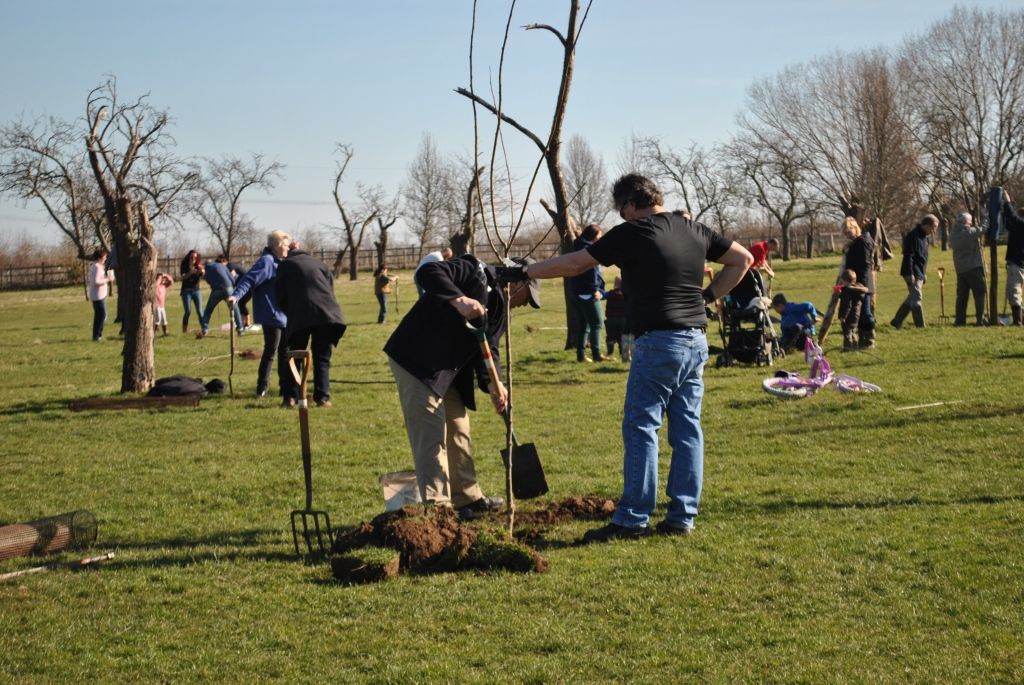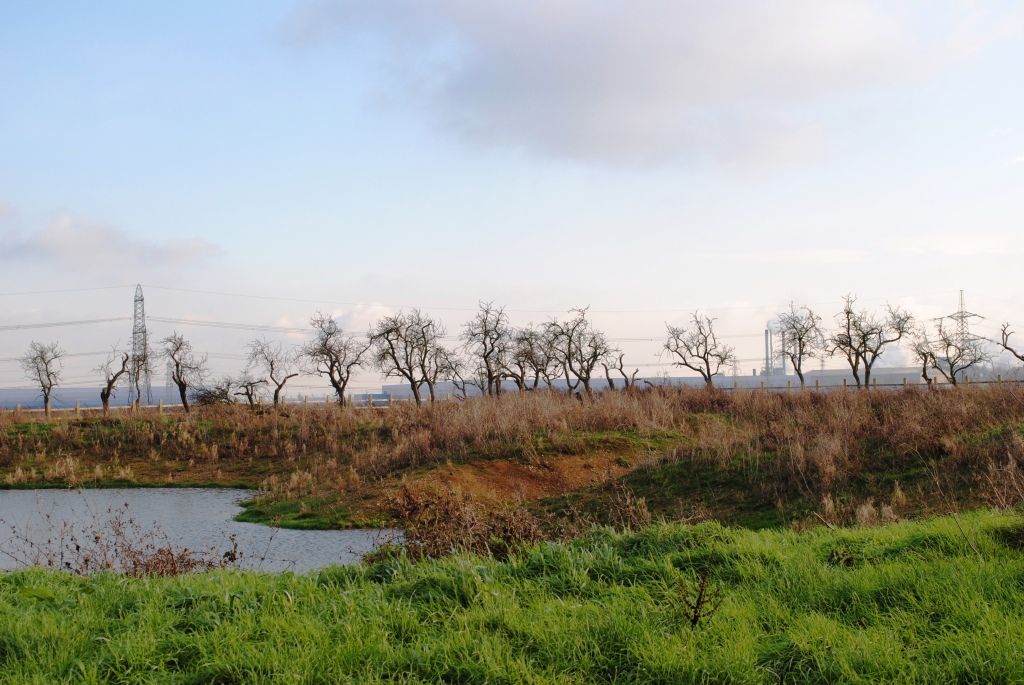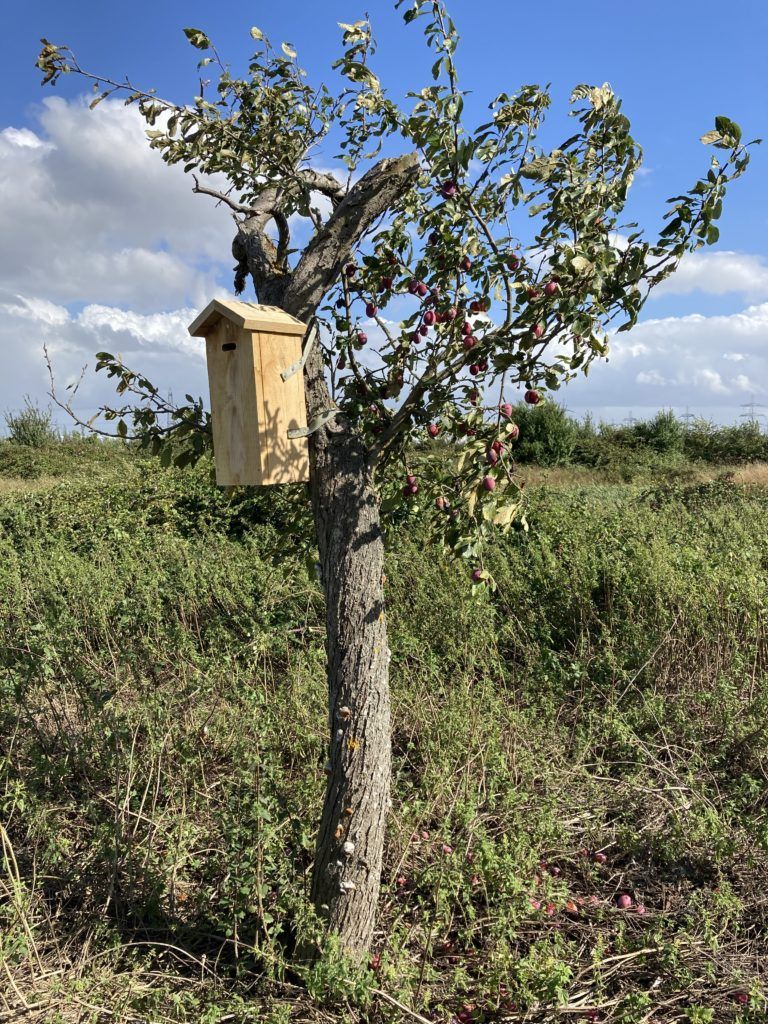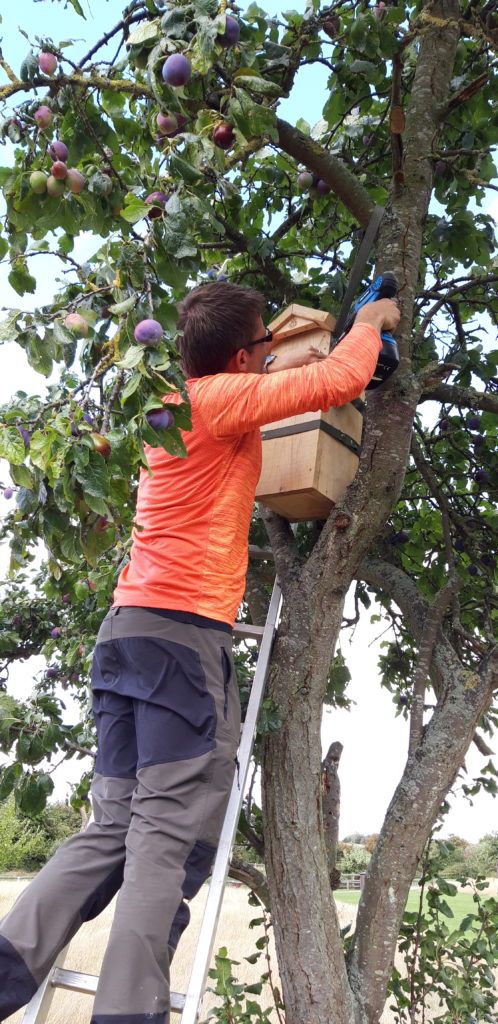Noble chafer habitat boxes
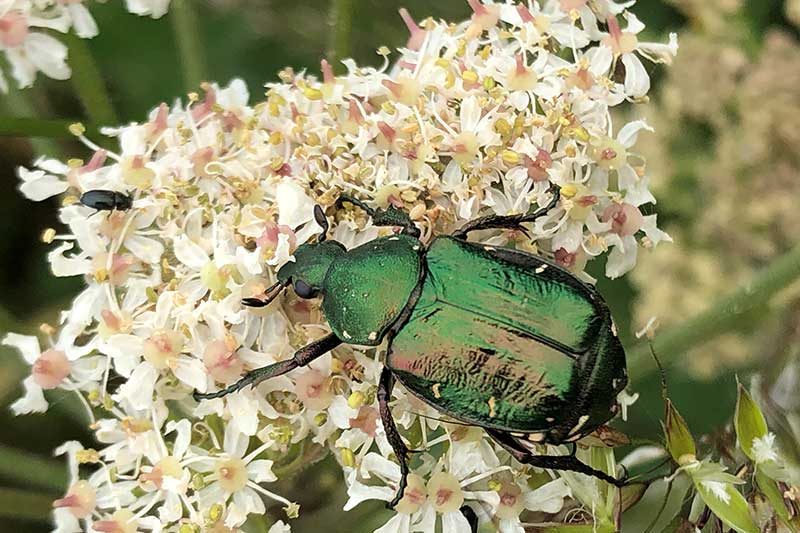
Background
About 13 years ago, whilst carrying out an orchard survey, Anita and Steve, our Traditional Orchards team discovered that the rare and beautiful noble chafer beetle was living in an overgrown plum orchard in Iwade, Kent. We immediately got in touch with the parish and borough councils to see what could be done to make sure this beetle was well looked after, especially as this was the first record for over 50 years in Kent! When PTES learned that part of the orchard was due to be built on, we began to work with the developers and ecologists too, in the hope that something could be done to save this secretive beetle and that it would continue to survive here after the houses were built.
Community Orchard
We subsequently found signs of the noble chafer beetle in the adjacent community orchard. We encouraged the borough council to plant some new fruit trees to try to replace the rapidly aging trees. They also agreed to mow less often and try to encourage hogweed and meadowsweet to grow around the edge of the orchard to provide nectar sources for noble chafers. Although these measures have improved the orchard habitat, there are still not enough trees in a suitable condition for noble chafers, especially as the old ones are in a rapid decline.
The Development
As part of the mitigation plan, before the houses were built, each fruit tree in the building site was painstakingly dug up and re-planted in the mitigation site. Many survived for 5-6 years but now more and more have died or have been reduced to just one living branch. In 2019 we put a pheromone trap (find out more about this separate project) up in the mitigation site and I’m pleased to report that it caught 2 females. They were carefully released unharmed and were able to go about their business (hopefully mating and laying eggs to start the next generation). However, there is very little suitable habitat left for them in this orchard, so something needed to be done.
Artificial Nesting Boxes
Nicklas Jansson, an entomologist at Linköping University, Sweden found that wooden boxes filled with wood shavings and leaf litter (to mimic the inside of a hollow partially decaying tree) were successful in attracting beetles to live and breed inside them. After reading his research, we decided to try his method at Iwade as a last chance for noble chafers in Kent. It takes approximately 3 years for the material inside to rot down and be suitable for the beetles.
Today, probably just a handful of the trees in Iwade orchard are suitable for the noble chafer. Therefore, we have placed boxes in the orchards to provide extra habitat for the beetle in the orchard where the trees are gradually dying. It may also be possible to help the noble chafer population to expand and gradually move to other areas if they can use these boxes as stepping-stones to other suitable areas. The next step is to place boxes along roads and in private gardens.
So far, 8 boxes have already been erected in the orchards and 1 in a private garden.
The future
We don’t know what the future holds for the noble chafer beetle at Iwade, it now hangs in the balance. But we are optimistic that the boxes will at least prolong its ability to survive here and may bridge the gap between the remaining old trees and the young trees which will become suitable in about 30 years time. I think it would be beneficial to plant more plum trees in both orchards, where old trees have been lost. It is also important to retain the dead trees and stumps for as long as possible as these are a great habitat for birds, bats and insects.
Find out more about noble chafers and traditional orchards.

